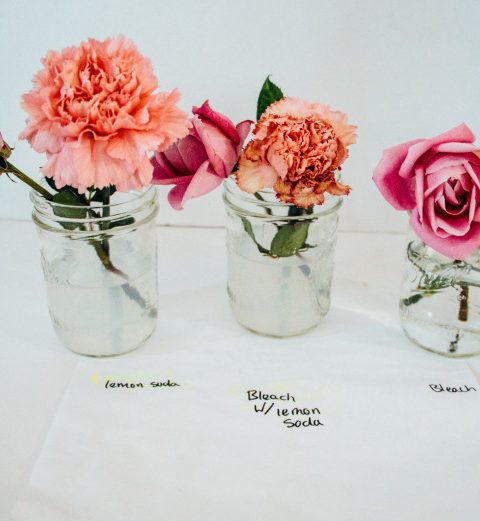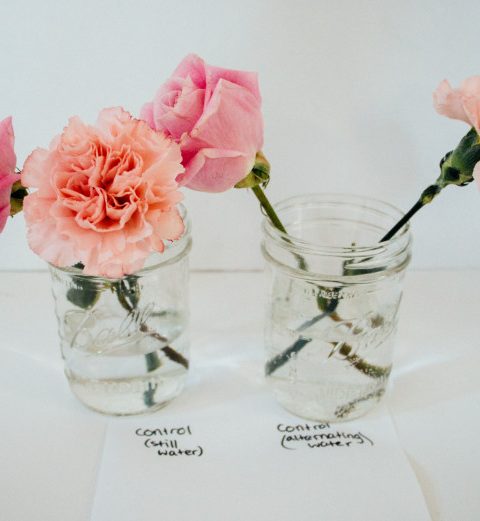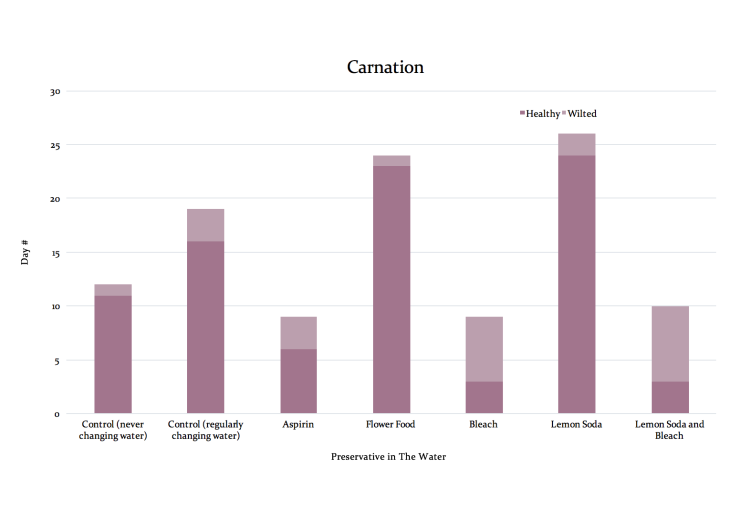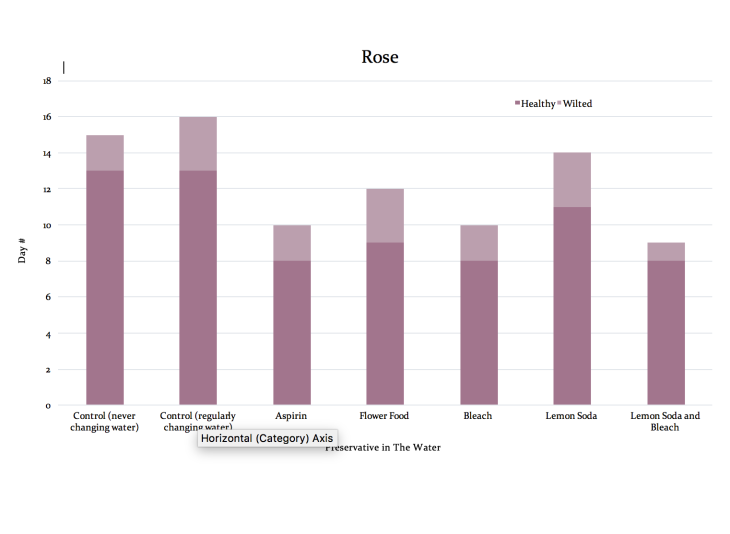I try to make varied and wide-ranging suggestions, but my own interests seem to have an overwhelming sway on my daughters choices…of science fair projects.
Last year she tested the effects of various types of ice-melt on perennials (someday, I swear I will get around to sharing those rather interesting results with you) and this year, after she insisted the experiment must again include plants, she staged trials of various additives in the water of cut flowers.
The whole thing was inspired by a trip we took a couple of years ago to California where we toured the greenhouses of various California cut flower growers. Which just goes to show that when you take your child to work with you, you do actually mess with their heads.

Her trial included two main variables and seven different cases. Roses (woody stemmed plants) and carnations (non-woody stemmed plants) were used primarily for three reasons… we like pink flowers and they looked pretty together at the store, the roses were remarkably cheap! (less than the carnations), and, most inconsequently at the time, because I had some notion that maybe they might perform differently – potentially giving an interesting twist on the subject.

It turns out that a mother with a science background and an interest in plants might have some intuition about these things.
The roses and the carnations performed very differently.
Are you surprised? I have to admit, I was.


Here is the blow by blow chart of how this played out. (open chart images in a new tab if you want to see them bigger) Carnations performed well in the cut flower food but in this study, they actually liked the lemon soda (we used the good stuff – no High Fructose Corn Syrup and real lemon juice) even more. But the roses, they did the best in plain old clean water.


So the real question is this why the difference? I’m curious what you biologists, gardeners, horticulturists and cut flower experts think.
What is it about having the extra xylem layer to the stem that explains the results? Or is it something else?
Our deeper research reveals that Chrysal (the maker of the flower food) actually has a selection of different formulations of cut flower foods for different types of flowers. Which clearly indicates that ground breaking science was not being conducted in our living room.
Is it simple economics and logistics that explains why the food packets are generic (not specialized for type of flowers)? Are you surprised that diluted lemon soda is actually so good (at least for carnations?). And what about the bleach drops and aspirin tab trials…surprisingly useless if not straight-up detrimental.
Isn’t this all so interesting? It’s why I happily declare, Vive la Science Fair!
(Which I think should be renamed to: Festival of Children De-bunking Internet Lore and Identifying Economic Truths)
p.s. If you want to know more about her methods – leave a note in the comments and we can answer questions.
images: rochelle greayer
This is wonderful! Both that she is interested and her findings. I hope my kids are that savvy and their science fair projects that interesting when they get older. Please post the snow melt information! We have lots of perennials beside our walkways and driveway.
This is a amazing share. I hope that my sister can do just as well at her science fair!